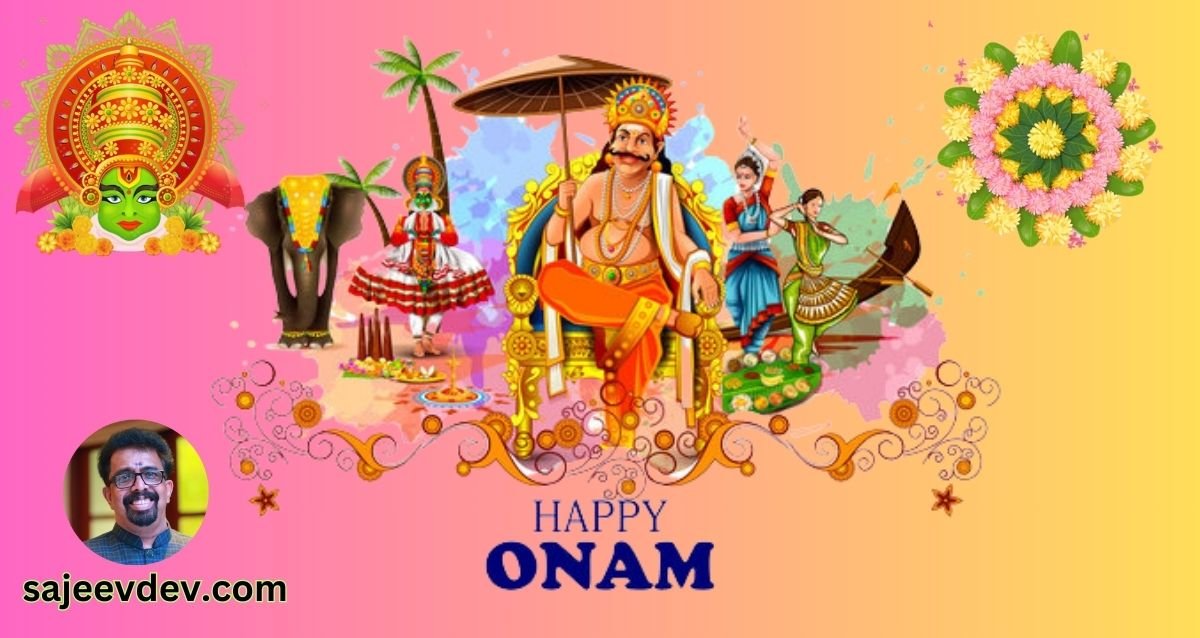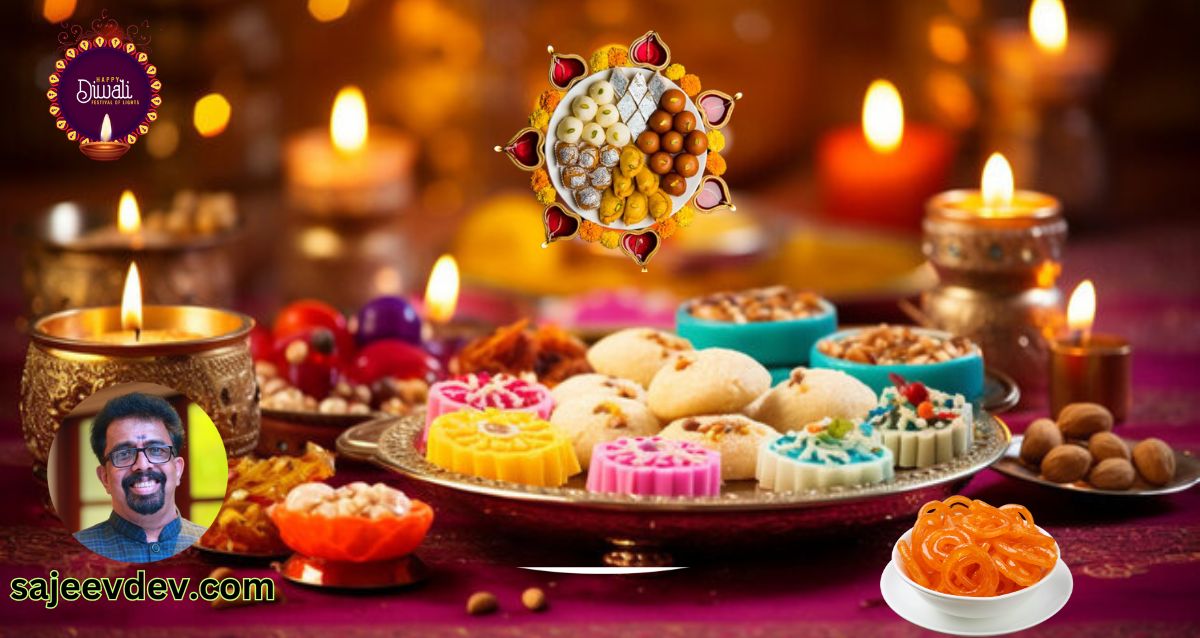Onam is a vibrant and significant harvest festival celebrated predominantly by the people of Kerala
Onam is a vibrant and significant harvest festival celebrated predominantly by the people of Kerala, a state situated in the southwestern region of India. Recognized as the official festival of Kerala, Onam embraces a tapestry of cultural significance and ancient Hindu traditions, becoming an integral part of the state’s identity. The festival marks the return of the mythical King Mahabali and is observed with grandiose enthusiasm and fervor.
The importance of Onam to Keralites cannot be overstated. It signifies not only the end of the monsoon season but also serves as a symbol of unity and prosperity. Spanning over ten days, from Atham to Thiruvonam, each day of Onam brings specific customs and rituals that are joyfully followed by the people. These traditions include the creation of intricate flower carpets called Pookalam, elaborate feasts known as Onam Sadhya, and traditional dances such as Thiruvathira, Kathakali, and Pulikali.
Designated as the state festival of Kerala, Onam plays a crucial role in reinforcing the state’s cultural heritage. The exuberant celebrations reflect the communal harmony and the deep-rooted values of hospitality and generosity. During Onam, people of all religions and communities come together, contributing to the festival’s diverse and inclusive nature.
Furthermore, Onam’s recognition transcends state boundaries, garnering global attention and drawing visitors from various parts of the world. Its rich cultural heritage, interwoven with mythological legends, vibrant rituals, and culinary delights, position Onam as not just a festival but a grand showcase of Kerala’s cultural ethos. Thus, Onam stands as a beacon of Kerala’s rich traditions and cultural magnificence, celebrated with unmatched zeal and universal appeal.
Historical and Mythological Significance
Onam, celebrated by the people of Kerala, is deeply rooted in both historical and mythological narratives. Central to the celebration is the legendary story of King Mahabali, a benevolent ruler who inspired immense loyalty and affection among his subjects. His reign is described as a golden era characterized by prosperity, equity, and happiness. Under his leadership, society thrived, and people lived in harmony, free from deceit and disparity.
The mythological significance of Onam is further enriched by the narrative of Vamana, the dwarf avatar of Lord Vishnu. According to Hindu mythology, the Devas, feeling threatened by Mahabali’s growing power and popularity, approached Vishnu to curb the king’s influence. In response, Vishnu took the form of Vamana and visited Mahabali during a grand yagna (sacrificial ritual). The king, known for his magnanimity, was granting boons to attendees when Vamana arrived, requesting a seemingly modest gift: three paces of land.
True to his word, Mahabali agreed, not foreseeing the divine test hidden within the request. Upon acceptance, Vamana expanded into a colossal form, covering the earth and the heavens in just two steps. When there was no space left for the third step, Mahabali, upholding his promise, offered his own head. Vamana’s third stride sent Mahabali to the netherworld (Patala). However, impressed by Mahabali’s devotion and integrity, Vishnu granted him the boon of visiting his kingdom and subjects once every year. Onam marks this auspicious annual return of King Mahabali, symbolizing a celebration of his legacy and the virtues he embodied.
Through the commemoration of these events, Onam not only preserves ancient mythological traditions but also serves as a reminder of the noble ideals of equity, charity, and goodwill that King Mahabali stood for. It is this vibrant blend of myth, history, and cultural values that imbues Onam with profound significance, celebrated annually with great enthusiasm and reverence by Keralites.
Duration and Timing of the Festival
Onam festival extends over ten days, each carrying its own significance and specific rituals that enrich the celebratory spirit of Kerala. The festival commences with Atham and culminates with Thiruvonam, the tenth and most significant day.
The first day, Atham, marks the commencement of Onam and is characterized by the preparation for the upcoming festivities, including the creation of the floral rangoli known as Pookalam. Over the subsequent days, the Pookalam grows in size and elaboration, reflecting the growing anticipation and joyous spirit of the festival.
Chithira, the second day, sees homes being cleaned and preliminary decorations being put up. Chodhi and Vishakam, the third and fourth days respectively, witness bustling markets as families purchase new clothes and prepare for the grand feasts that are to follow. Anizham, the fifth day, brings forth the Vallam Kali, or traditional snake boat races, an exhilarating event that garners substantial attention and enthusiasm.
Thriketa, Moolam, and Pooradam, the sixth to eighth days, focus on various cultural activities and traditional dances, further deepening the community’s connection to their heritage. On Uthradam, the ninth day, preparations reach their peak with households finalizing the grand feast known as Onasadya and participating in various traditional games.
Finally, Thiruvonam, the tenth day, is considered the most important, embodying the essence of Onam. Families gather to enjoy the Onasadya, a sumptuous banquet featuring numerous Kerala delicacies, and partake in cultural performances, reinforcing the bonds of unity, love, and gratitude.
Onam is celebrated in the Malayalam calendar month of Chingam, which usually falls around August to September. This period is significant as it marks the harvest season, symbolizing prosperity and abundance. The festival not only honors the agricultural roots of Kerala but also pays homage to the legendary King Mahabali, whose return is celebrated with much fervor and joy.
Cultural Events and Activities
One of the most captivating aspects of Onam is its vibrant spectrum of cultural events, deeply rooted in Kerala’s heritage. These celebrations bring together people from diverse backgrounds and age groups, creating a rich tapestry of communal harmony and joy. Among the many activities, the boat races, known as Vallam Kali, hold a special place. These races are a thrilling spectacle, featuring traditional snake boats manned by rowers in rhythmic synchrony. These boat races are not just sports events; they are a testament to team spirit and coordination, often accompanied by traditional boat songs that provide a pulsating background rhythm.
Another quintessential element of Onam is the intricate flower carpets, or Pookkalam. These elaborate floral designs are crafted with vibrant petals and arranged intricately in front of homes and temples. Pookkalam competitions are held regularly, showcasing the creativity and dexterity of participants. The floral decorations signify prosperity and the blossoming of life, adding a visual feast to the celebrations.
Traditional dances such as Thiruvathira Kali and Pulikali are also central to Onam festivities. Thiruvathira Kali is a graceful, rhythmic dance performed by women in a circular pattern around a nilavilakku (traditional lamp), often narrating tales from Kerala’s rich mythological history. On the other hand, Pulikali, or the ‘Tiger Dance,’ features performers painted in tiger stripes, dancing to the beats of traditional percussion instruments. This dance combines humor and energy, captivating audiences and bringing joyous laughter to the streets.
Music performances during Onam range from classical Carnatic concerts to folk songs that echo through villages. These performances preserve the audio heritage of Kerala and provide a soulful backdrop to the festive activities. The culmination of Onam’s cultural events is the grand feast known as Onasadya. This elaborate meal comprises various traditional dishes served on banana leaves, symbolizing the harvest season’s abundance and promoting a sense of unity as families and communities gather to share the feast.
Each activity during Onam is not just a celebration but a manifestation of Kerala’s rich cultural heritage, embodying the spirit of togetherness and the vibrant diversity of its traditions. These events bring to life the essence of Onam, making it a festival that is eagerly anticipated and cherished by all.
Onam Sadhya: The Grand Feast
One of the most remarkable facets of Onam, the annual harvest festival of Kerala, is the Onam Sadhya, a grand feast that epitomizes the state’s rich culinary heritage. The feast is a vegetarian extravaganza, traditionally served on a banana leaf, and comprising an elaborate multi-course meal that reflects the essence of Kerala’s culture. Each dish presented during the Onam Sadhya signifies various aspects of the region’s agrarian way of life, seasonal produce, and communal harmony.
The Onam Sadhya usually consists of 26 to 30 dishes, though the number can vary. These dishes include but are not limited to, ‘Rice’ as the staple, alongside ‘Parippu’ (a type of lentil curry), and ‘Sambar,’ a tangy and spicy vegetable stew. ‘Avial’, a thick mixture of vegetables and grated coconut, and ‘Thoran,’ a stir-fried vegetable dish with coconut, are quintessential components of the meal. The feast also features a wide range of pickles and side dishes like ‘Pachadi,’ a yogurt-based side dish, and ‘Olan,’ a delicate preparation of ash gourd and coconut milk.
A hallmark of Onam Sadhya is its array of condiments, such as ‘Puli Inji’ (a ginger and tamarind relish) and ‘Kichadi,’ which bestow a balance of flavors and textures. No Onam Sadhya is complete without the various ‘Payasams,’ or traditional Kerala puddings, which offer a sweet conclusion to the feast. These delicacies are usually made from rice, lentils, or vermicelli, cooked in milk or coconut milk and sweetened with jaggery.
The preparation of Onam Sadhya is a meticulous process that engages entire communities. In many households, women predominantly lead the preparation, symbolizing the communal unity intrinsic to the festival. The ritual of serving and eating the feast together on fresh banana leaves fosters neighborly bonds and conveys a spirit of inclusivity.
Overall, the Onam Sadhya goes beyond mere gastronomic indulgence; it embodies cultural values, celebrates nature’s bounty, and reinforces communal ties, making it an indispensable highlight of the Onam festival.
Onam in Contemporary Times
While Onam continues to be a celebration deeply rooted in Kerala’s cultural and agricultural traditions, the passage of time has ushered in significant changes in the way this harvest festival is observed. One of the most notable transformations has been the incorporation of modern technology and media, reshaping the dynamics of Onam festivities in both urban and rural settings.
In urban areas, the influence of contemporary elements is more pronounced. Social media platforms and digital communication have revolutionized the way people engage with the festival. Families separated by geographical distances use video calls to partake in rituals together, creating a virtual sense of community and togetherness. Online platforms also play a crucial role in marketing and sales of Onam-related goods such as traditional attire, festive decorations, and Onam Sadhya (the grand feast), making them more accessible to a broader audience.
Additionally, various organizations and cultural groups harness the power of social media to organize and promote Onam celebrations. These events often include digital contests in art, literature, and traditional games, attracting a diverse group of participants and keeping the festive spirit alive even in non-traditional settings. Moreover, public and private institutions in cities hold grand Pookalam (floral carpet) competitions and cultural performances, injecting new life into traditional practices.
Rural celebrations of Onam have also adapted, though they retain a stronger adherence to traditional customs. The advent of better communication technologies ensures that even in remote areas, people can access information about the latest trends and practices associated with the festival. The availability of logistical solutions has facilitated widespread participation in regional games like Vallamkali (snake boat races) and Pulikali (tiger dance), drawing enthusiasts from far and wide.
The influence of modernity on Onam is a testament to the festival’s dynamic nature. While the core essence remains unchanged, the means of celebration have evolved, blending age-old traditions with contemporary practices. This seamless amalgamation ensures that Onam continues to be relevant and cherished, bridging generations and adapting to the times.
Global Celebrations of Onam
Onam, an annual harvest festival intrinsic to Kerala, has transcended geographic boundaries and is now a significant cultural event for Malayali communities around the world. Keralites living abroad creatively preserve and continue their cultural heritage, ensuring that the essence of Onam is experienced far from their homeland.
In the United States, cities with substantial Malayali populations, such as New York, Houston, and Chicago, see grand celebrations of Onam. Community organizations and cultural groups orchestrate elaborate festivities, including traditional dance performances, music, and the iconic Onam feast known as ‘Onasadya’. These events serve not only as a connection to their roots but also as an avenue to educate younger generations about their rich cultural heritage.
Canada, particularly cities like Toronto and Vancouver, also witnesses vibrant Onam celebrations. The Malayali diaspora in these regions engage in cultural shows, art exhibitions, and culinary fairs that highlight Kerala’s traditions. These events offer a taste of their homeland, fostering a sense of community and belonging among dispersed Keralites.
In the Middle East, countries such as the United Arab Emirates and Saudi Arabia, where many Keralites reside, Onam is celebrated with great enthusiasm. Schools, clubs, and community centers often become hubs of activity, featuring traditional sports, boat races, and ‘Pookalam’ (floral carpet) competitions. These celebrations are a testament to the resilient preservation of cultural practices even in foreign lands.
The UK, Australia, and parts of Europe also echo with Onam festivities each year. London, Sydney, and Frankfurt, among others, host large-scale events where Malayalis along with their friends from various nationalities join in the revelry. Such global celebrations of Onam reflect the festival’s universal appeal and the Malayali diaspora’s commitment to keeping their cultural heritage alive, no matter where they are.
The Spirit of Onam
Onam, the grand annual harvest and cultural festival of Kerala, encapsulates the essence of unity, prosperity, and cultural pride among Keralites. This vibrant festival not only marks the welcoming of the legendary King Mahabali but also serves as a time when families and communities come together, celebrating their shared heritage and values.
The spirit of Onam is deeply rooted in the tradition of togetherness, where individuals from all walks of life take part in the festivities, showcasing the diversity and unity of Kerala’s cultural landscape. The extensive range of activities, from the intricate floral arrangements known as Pookalams to the exhilarating snake boat races or Vallam Kali, highlights the festival’s role in reinforcing communal harmony and familial bonds.
Furthermore, Onam’s culinary delights, particularly the elaborate Onam Sadya, underscore the communal aspect of this festival. Shared meals become an avenue for strengthening relationships, as families and friends gather to partake in the diverse range of vegetarian delicacies served on banana leaves. This communal dining experience stands as a testament to the collective spirit fostered during Onam.
Preservation of rich cultural traditions is another vital aspect of Onam. Traditional dances like Thiruvathira and Pulikali, as well as the folk music and rituals, keep the cultural tapestry of Kerala vibrant and intact. By participating in these age-old customs, the people of Kerala ensure that their cultural heritage is not only remembered but also passed down through generations.
Thus, Onam stands as a powerful symbol of Kerala’s cultural heritage, a festival that epitomizes the region’s communal harmony, prosperity, and cultural pride. It is a period where the past and present merge, and where the entire community partakes in the joy and abundance of this illustrious celebration.



